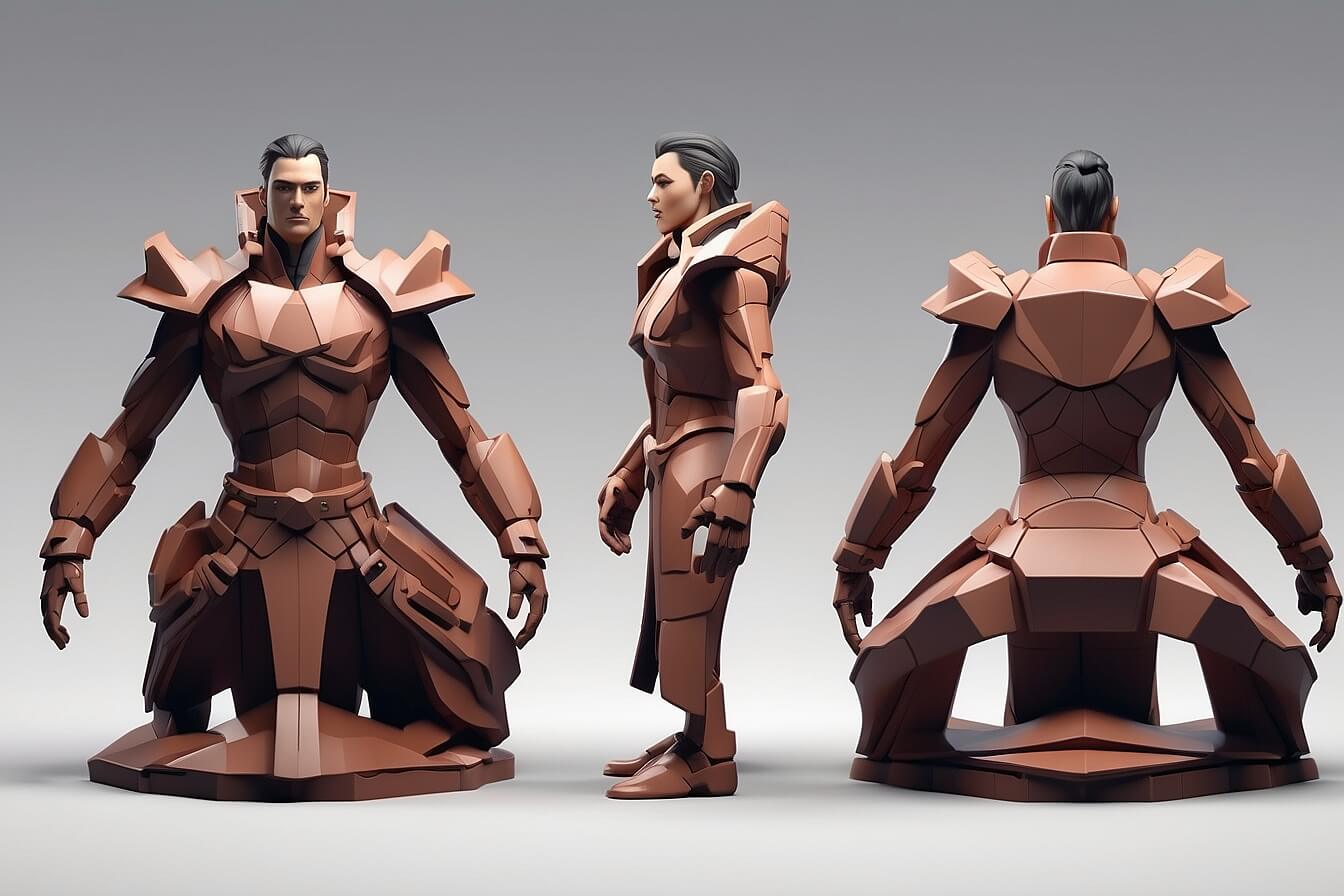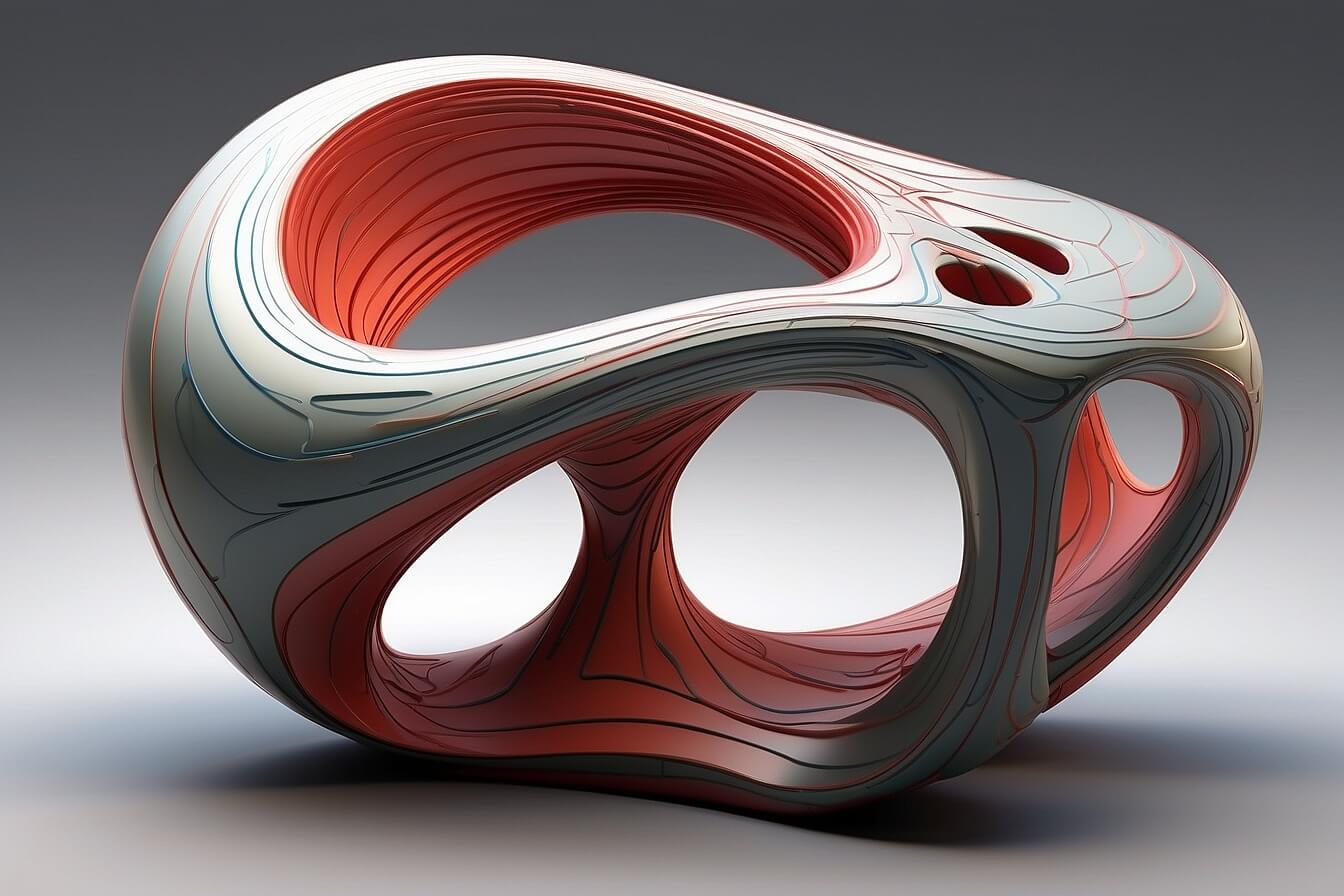Table of Contents
The art of 3D character modeling stands as a pivotal process, breathing life into games, animated movies, etc. No matter how unrealistic the idea is, skilled 3D character designers can make them as good as real. This is made possible by the latest technologies and the creative prowess of the artists.
3D art is significantly complex and character design is the trickiest part of the process. When done correctly, 3D characters look as real as photographs, displaying every muscle, sinew, and skin texture to perfection.
But how exactly does this process unfold? Let’s dive into the fascinating world of 3D character styles in modern game development.
3D character development is a complex and essential component of games as well as movies, where skilled artists use a variety of software and tools to create lifelike and engaging characters. These characters, ranging from protagonists to secondary and peripheral figures, play crucial roles in enhancing the gaming experience by contributing to the game’s narrative and realism. Character designing has a vast range that includes human characters, supernatural beings, animals, fantasy characters, robots, etc.
The modern-day game development studio starts the 3D modeling from basic structures like cubes and polygons. The mesh is built over a basic shape and the more complex it gets, the more realistic is the outcome. The process involves gradually creating intricate designs and manipulation of the mesh to craft characters that align with the game’s storyline and feel authentic.
Collaboration with professional 3D modeling companies can optimize this process, ensuring high-quality character models that elevate the overall gaming experience. In essence, every stage of 3D character modeling, from initial design to final modeling, demands a harmonious blend of technical skill and creativity, crucial for bringing the game’s world and its inhabitants to life.
In most games with a narrative, characterization is a crucial part. Human, animal, and demi-god characters serve as primary and secondary characters that propel the game’s progression. Superior character modeling adds to the immersion of the gameplay and has other purposes which are as follows:

Polygon modeling 3D game characters involves creating three-dimensional objects using polygons, primarily triangles and quadrilaterals. The density and arrangement of these polygons determine the complexity and detail of the model.
The process typically begins with the creation of a base mesh, a simple geometric shape like a cube or sphere. Artists then refine this mesh, using techniques such as extrusion (pulling out shapes from a surface), cutting (adding edges and vertices to refine detail), and smoothing (rounding sharp edges). Software like Autodesk Maya, Blender, and 3ds Max offer robust toolsets for creating and manipulating polygon meshes.
One of the primary advantages of polygon 3D modeling type is its direct control over the model’s structure. Artists can precisely define the shape and level of detail, making it ideal for creating both complex, high-resolution models and optimized, low-polygon assets for real-time applications. Polygon models can be easily scaled in terms of complexity, allowing developers to create detailed characters and environments without overburdening the game’s performance.

NURBS (Non-Uniform Rational Basis Splines) 3D modeling is a mathematical modeling technique used to represent curves and surfaces in three-dimensional space. Unlike polygon modeling, NURBS uses continuous mathematical formulas to produce smooth, highly accurate curves and surfaces.
NURBS modeling starts with defining control points that form a NURBS curve. These control points influence the shape of the curve but do not necessarily lie on the curve itself, offering a high degree of control over its form. The flexibility and precision of NURBS help create complex, organic shapes with smooth surfaces.
Software tools such as Autodesk Maya, Rhinoceros (Rhino), and Autodesk AutoCAD are renowned for their NURBS modeling capabilities. NURBS modeling’s primary advantage lies in its accuracy, essential for realistic visualization and manufacturing processes.
In terms of game development, NURBS is less commonly used directly due to the real-time rendering constraints of game engines. These models can play a crucial role in the initial stages of game asset creation, especially for objects that require precise, smooth forms. Artists can create these assets using NURBS and then convert them into optimized polygonal meshes for use in-game engines.
The process of modeling 3D game characters is a complex, and multi-stage workflow, involving a seamless blend of creativity and technology. Reputed 3D modeling services involve the following stages of the development process:
The inception of a 3D character springs from a rich narrative. Here, designers sketch the character’s backstory, personality, and visual traits. Gathering a diverse array of references, designers ensure every aspect of the character aligns with the game’s vision, making the character not just a figure, but a story in itself.
Blocking is also known as box modeling or block modeling. It is a fundamental step in the character creation process where the artist constructs the basic shape and proportion of the character using simple geometric shapes. In 3D modeling, artists use primitives like cubes, spheres, and cylinders to represent the major parts of the character’s anatomy.
The primary purpose of blocking is to establish the character’s overall structure and scale without focusing on details. It allows the artist to quickly sketch out the character’s form and experiment with different proportions and poses. This step is crucial for setting a solid foundation for the subsequent modeling process.
3D character sculpting is a pivotal stage akin to traditional sculpting. At the heart of this process lies a blank model, a digital canvas devoid of features, awaiting the creative touch of the artist. The process is meticulous and intuitive, with the artist adding and subtracting digital clay, shaping intricate details that breathe life into the character. The character’s features are sculpted to reflect their experiences, their role in the game’s narrative, and their interaction with the game world and its inhabitants.
Topology involves defining the surface flow of the character. It’s about ensuring the character’s skin surface has the right structure for animation, striking a balance between visual richness and functional flexibility, particularly in facial expressions and body movements.
Crafting 3D character topology focuses on the structure and flow of the mesh that makes up the character’s surface. Topology, essentially the arrangement of polygons in a 3D model, plays a crucial role in defining how well a character moves and deforms during animation.
This uniformity allows for more predictable deformation of the mesh during animation and makes the model easier to work with during the rigging and skinning stages.
Rigging is akin to embedding a digital skeleton into a 3D model, defining the points of articulation, and laying the foundation for realistic movement. This virtual skeleton, comprised of bones and joints, is meticulously structured to mirror the character’s anatomy, ensuring natural motion. Following rigging, skinning attaches the mesh, or character’s surface, to the rig. Together, rigging and skinning transform a static 3D sculpture into a dynamic, animate entity, capable of nuanced, lifelike actions, essential for infusing vitality into digital characters.
Rendering is the transformative process where a 3D model is artfully converted into a captivating 2D image, akin to a digital photograph of the character. This stage is where lighting, texture, and camera work together to cast the character in its best light. Beyond its artistic merit, rendering is a powerful tool in marketing, offering a visually striking representation of the character that can entice and engage audiences, serving as a compelling visual introduction to the character’s role and persona within the game.
Animation is the final stage where the 3D character designers infuse static models with the essence of motion and emotion. Animators use rigs to manipulate the character’s movements, from the broad strokes of running and jumping to the subtle nuances of a smirk or a furrowed brow. This phase is pivotal in creating an immersive experience, as it allows characters to interact with their environment and other characters in a way that feels authentic, drawing players deeper into the game’s narrative.
Juego Studios offers 3D character design services converging creativity and technology at its best. Our professionals are proficient in different 3D modeling types and use industry-standard tools like Autodesk Maya, Blender, 3Ds Max, and more to create realistic characters that take the game storyline forward.
We are a game development studio delivering immaculate 3D art and relevant services for over a decade and are trusted for the quality and efficiency of the team. Witness your 3D character art requirements fulfilled without compromise with the help of the top professionals in the industry.
The art of 3D character modeling is an elemental part of the 3D art development process. It is indispensable in designing engaging games with a captivating narrative. Experienced 3D character designers with an in-depth understanding of the intricacies of modern game development are the ideal solution to your needs. The above-mentioned is a detailed guide to the technical nuances of this art form and how to use it to the best of your advantage.